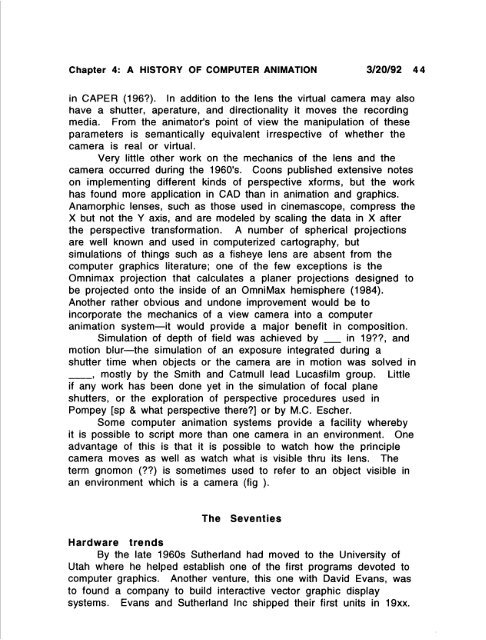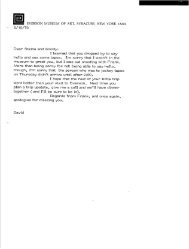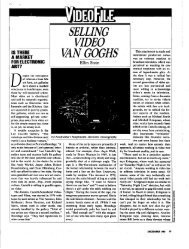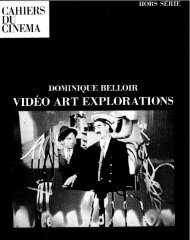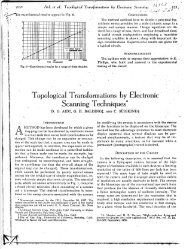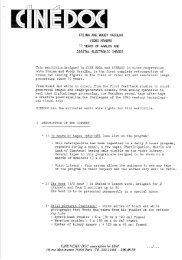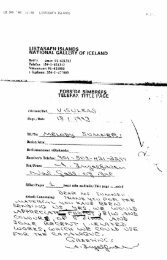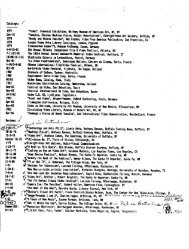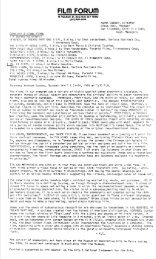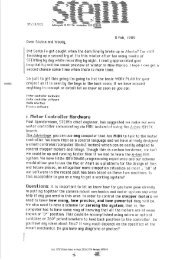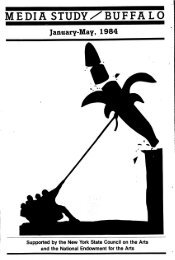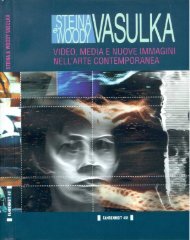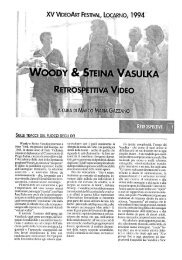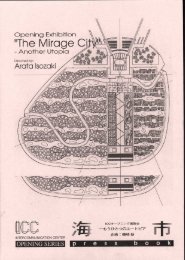Chapter 4: A HISTORY OF COMPUTER ANIMATION ... - Vasulka.org
Chapter 4: A HISTORY OF COMPUTER ANIMATION ... - Vasulka.org
Chapter 4: A HISTORY OF COMPUTER ANIMATION ... - Vasulka.org
You also want an ePaper? Increase the reach of your titles
YUMPU automatically turns print PDFs into web optimized ePapers that Google loves.
<strong>Chapter</strong> 4 : A <strong>HISTORY</strong> <strong>OF</strong> <strong>COMPUTER</strong> <strong>ANIMATION</strong> 3/20/92 44<br />
in CAPER (196?) . In addition to the lens the virtual camera may also<br />
have a shutter, aperature, and directionality it moves the recording<br />
media . From the animator's point of view the manipulation of these<br />
parameters is semantically equivalent irrespective of whether the<br />
camera is real or virtual .<br />
Very little other work on the mechanics of the lens and the<br />
camera occurred during the 1960's . Coons published extensive notes<br />
on implementing different kinds of perspective xforms, but the work<br />
has found more application in CAD than in animation and graphics .<br />
Anamorphic lenses, such as those used in cinemascope, compress the<br />
X but not the Y axis, and are modeled by scaling the data in X after<br />
the perspective transformation . A number of spherical projections<br />
are well known and used in computerized cartography, but<br />
simulations of things such as a fisheye lens are absent from the<br />
computer graphics literature ; one of the few exceptions is the<br />
Omnimax projection that calculates a planer projections designed to<br />
be projected onto the inside of an Omnimax hemisphere (1984) .<br />
Another rather obvious and undone improvement would be to<br />
incorporate the mechanics of a view camera into a computer<br />
animation system-it would provide a major benefit in composition .<br />
Simulation of depth of field was achieved by in 19??, and<br />
motion blur-the simulation of an exposure integrated during a<br />
shutter time when objects or the camera are in motion was solved in<br />
_, mostly by the Smith and Catmull lead Lucasfilm group . Little<br />
if any work has been done yet in the simulation of focal plane<br />
shutters, or the exploration of perspective procedures used in<br />
Pompey [sp & what perspective there?] or by M.C . Escher .<br />
Some computer animation systems provide a facility whereby<br />
it is possible to script more than one camera in an environment . One<br />
advantage of this is that it is possible to watch how the principle<br />
camera moves as well as watch what is visible thru its lens . The<br />
term gnomon (??) is sometimes used to refer to an object visible in<br />
an environment which is a camera (fig ) .<br />
The Seventies<br />
Hardware trends<br />
By the late 1960s Sutherland had moved to the University of<br />
Utah where he helped establish one of the first programs devoted to<br />
computer graphics . Another venture, this one with David Evans, was<br />
to found a company to build interactive vector graphic display<br />
systems . Evans and Sutherland Inc shipped their first units in 19xx .


